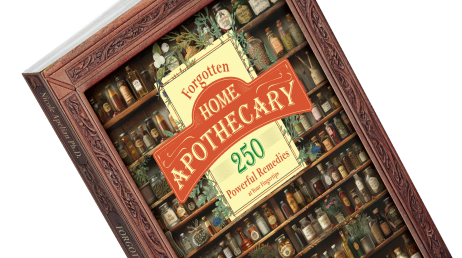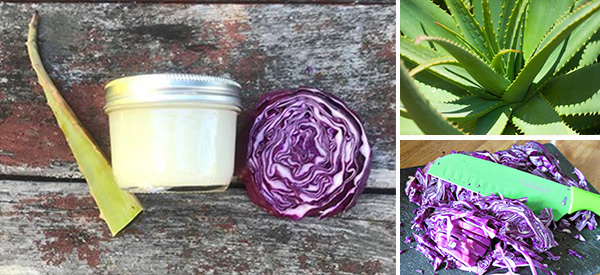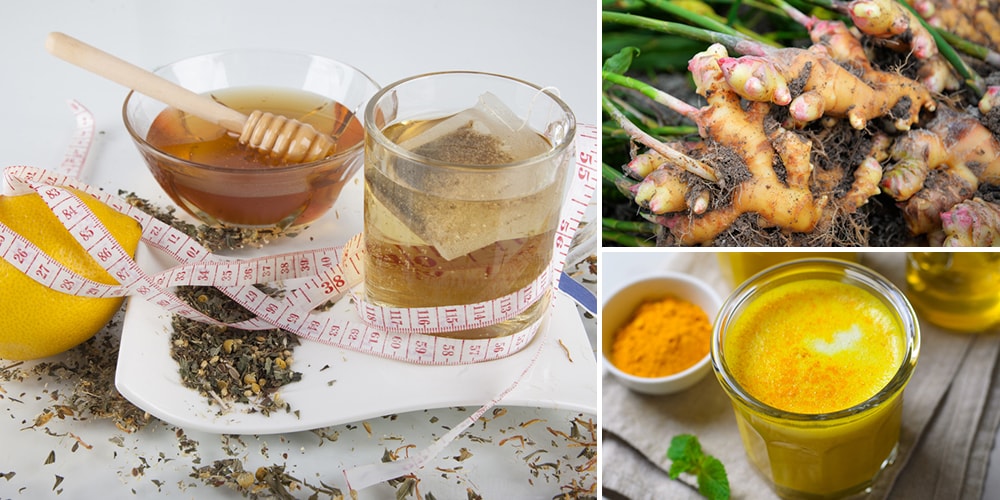
Pennywort: The Low Growing Herb With High Healing Value
A quiet healer that creeps along the ground yet carries centuries of respect in herbal medicine, Pennywort has long been treasured for its ability to calm the mind, restore vitality and support the skin. Known in traditional systems as Gotu Kola, this humble plant offers much more than its simple appearance suggests. If you have walked past it without knowing, you are not alone. Pennywort tends to hide in plain sight, spreading softly beneath taller plants while building remarkable medicinal strength in its leaves and stems.
Pennywort has been used for thousands of years across Asia, Africa and the tropics, often referred to as a longevity herb. It was traditionally consumed to support memory, soothe inflammation, and strengthen connective tissues. Some herbalists still call it the herb of enlightenment due to its gentle calming effect on the nervous system. Despite its delicate shape, Pennywort is resilient, adaptable and easy to grow, which makes it an excellent addition to a home apothecary.
Benefits of Pennywort
Supports Memory and Cognitive Function
Pennywort has a long reputation as a mind tonic. Traditional healers used it to sharpen focus, restore clarity, and support long term cognitive health. Modern herbalists still value it for students, older adults or anyone who wants a natural way to nourish the brain. Its compounds help stimulate healthy circulation, especially to the brain, which allows the mind to feel more awake and refreshed.
Another reason Pennywort supports brain health is its natural calming action. It helps quiet the background noise of stress, which often interferes with concentration. For people who feel mentally scattered or overwhelmed, a small daily dose can help bring stillness without drowsiness.
Nourishes Skin and Connective Tissue
Pennywort is often called a skin rebuilding herb. It helps support collagen production, which makes it useful for damaged skin, slow healing wounds, minor burns and scarring. Traditional practitioners used the sap or poulticed leaves directly on the skin to soothe redness and speed up recovery.
Taken internally, Pennywort supports veins and connective tissues throughout the body. It can be helpful for people who experience leg heaviness, spider veins or circulation issues. Its gentle, toning nature makes it a steady ally rather than a quick fix, which suits long term wellness.
Soothes Anxiety and Supports the Nervous System
Pennywort offers a calming energy without sedating the mind. Herbalists often recommend it for people who hold stress in their chest or stomach, as it helps relax tension while keeping thoughts clear. This makes it valuable for meditation, deep focus work or evening unwinding.
Its subtle effect on the nervous system helps smooth emotional edges during difficult periods. Pennywort does not numb. Instead, it gently brings the mind back into balance so the body can recover from stress.
How to Identify Pennywort
Pennywort is a small, low growing plant with bright green, rounded leaves shaped almost like tiny umbrellas. Each leaf rises on a slender stem and displays delicate veins that fan outward. The leaves are typically smooth with slightly scalloped edges. When mature, they form a charming carpet-like spread.
You will find Pennywort in warm, moist areas such as stream banks, shaded yards, tropical gardens and damp woodland edges. It favors humidity and soft soil. The plant sends creeping runners across the ground which root at the nodes, creating new patches over time.
The flowers are tiny and often overlooked. They appear as small clusters near the base of the plant, pale pink or whitish in color. Although they help confirm identification, most herbalists recognize Pennywort from its distinctive leaves.
How to Forage Pennywort Safely
Forage Pennywort only from clean, chemical free areas since the plant readily absorbs contaminants from soil and water. Avoid roadside ditches, industrial drainage zones or places sprayed with herbicides. Choose patches that appear vibrant, green and undamaged.
Harvest the youngest leaves for the best flavor and potency. Older leaves are still medicinal, but younger growth tends to carry a sweeter taste and more active compounds. Cut the leaves with scissors rather than pulling to avoid stressing the plant and to encourage regrowth.
Drying Pennywort is simple. Spread the leaves in a single layer in a warm, shaded place with good airflow. Once crisp, store them in glass jars away from heat and light. Pennywort also freezes well if you prefer using it fresh in teas or tonics.
Plant Profile
- Scientific Name: Centella asiatica
- Common Names: Pennywort, Gotu Kola, Brahmi, Indian Pennywort
- Family: Apiaceae
- Parts Used: Leaves and stems
- Taste: Mild, slightly bitter, grassy
- Energy: Cooling and calming
- Best For: Skin health, circulation, memory, nervous system support
How to Grow Pennywort
Pennywort thrives in damp, nutrient rich soil and partial shade. It spreads by runners, which makes it easy to cultivate once established. Plant it where it can enjoy moisture without standing water. A garden bed near a shaded hose area or a patio pot that gets consistent watering works perfectly.
To grow from cuttings, simply place a fresh runner or stem node onto soil and keep it moist until roots form. Pennywort also grows readily from nursery starts. Once it takes hold, it will create a lush ground cover that requires little attention.
During warm months, Pennywort appreciates steady watering and occasional compost. It can survive brief dry spells, but prolonged drought will stress the plant. In cooler climates, it can be grown in containers and brought indoors during winter.
How to Use Pennywort in Natural Medicine
Pennywort can be enjoyed fresh, dried or taken as a tincture. The simplest preparation is a daily tea. Steep one to two teaspoons of dried Pennywort in hot water for ten minutes. The flavor is gentle, earthy and easy to blend with mint or lemon balm.
Fresh Pennywort juice is highly valued in traditional medicine. Blending the leaves with water and straining creates a potent green tonic that supports circulation and cognitive health. It is often taken in small doses due to its strength.
Topically, Pennywort can be made into a poultice or infused into oils for soothing irritated or aging skin. Its collagen supporting nature makes it valuable in homemade salves and creams.
Safety and Precautions
Pennywort is considered gentle, but moderation is wise. Very high doses can cause digestive discomfort in some individuals. People with liver conditions should consult an herbal practitioner before using Pennywort regularly, as it mildly influences liver function.
Avoid harvesting from polluted areas due to the plant’s tendency to absorb environmental contaminants. Pregnant or breastfeeding women should seek professional advice before using Pennywort medicinally.
Pennywort vs Similar Plants
| Plant | Distinguishing Features | Key Benefits | Look Alike Risk |
|---|---|---|---|
| Pennywort (Centella asiatica) | Rounded umbrella like leaves, creeping runners | Skin support, cognition, circulation, calming | Low if leaf shape is correctly noted |
| Marsh Pennywort (Hydrocotyle vulgaris) | Similar leaf shape but thicker, often wetter habitats | Mild diuretic, less potent medicinally | Moderate in marshy regions |
| Dollarweed (Hydrocotyle spp.) | Larger glossy leaves, often invasive | Mostly ornamental, minimal medicinal benefits | High in southern regions |
| Brahmi (Bacopa monnieri) | Thicker succulent leaves, grows in wet soils | Memory support, nervous system | Medium for beginners |
The Forgotten Home Apothecary
If you enjoy working with gentle, nourishing herbs like Pennywort, you will find tremendous value in The Forgotten Home Apothecary. This guide revives more than one hundred traditional remedies that were once common in every household. Each remedy is explained in clear steps so you can build confidence in your own herbal skills.
Inside, you will learn how to prepare tinctures, salves, poultices, infused oils and tonics using plants that grow in everyday backyards. Many of the herbs highlighted in the book share Pennywort’s calming, restorative nature. They support the body in safe, natural ways without relying on expensive or synthetic treatments.
For anyone wanting to bring herbal wisdom back into the home, this resource provides the kind of practical, time tested knowledge that helps families care for themselves again. It is a beautiful companion to any home apothecary.
Final Thoughts
Pennywort is a small herb with a broad range of benefits. It supports the mind, skin, nerves and circulatory system with quiet strength. Its gentle nature makes it suitable for daily use, while its resilience in the garden ensures a steady supply for any home herbalist.
Adding Pennywort to your apothecary is one of the simplest ways to bring ancient herbal wisdom into your modern life. It is a reminder that often, the most unassuming plants carry the deepest healing potential.
You may also like:
 DIY Recipes for Pain Relief, Detox, Memory, & More!
DIY Recipes for Pain Relief, Detox, Memory, & More!
The Best Natural Painkiller That Grows in Your Own Backyard (Video)
The Plant That Helps Every Part of The Body At Once
Fennel Tea: A Soothing Brew with Ancient Roots and Modern Benefits










